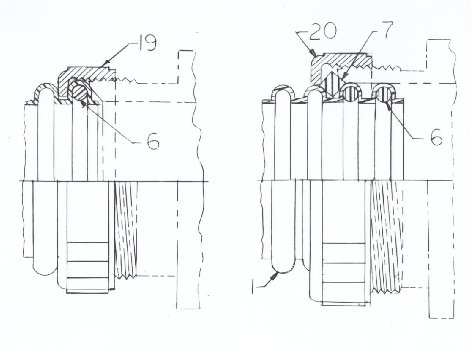Flex P-Trap for sink
If you have a rigid p-trap under the sink, tensions (forces) will appear in the line as a result of misalignments, vibrations from the disposal, small earthquakes, changes of the frozen line in the winter time etc. Some of these tensions are eliminated by the rubber gaskets, but not all; and the rigid p-trap will leak. When using the flex p-trap, these tensions (forces) can be eliminated by pouring boiling water (hot water) and cold water down the flex p-trap, once it is installed. By doing this, the cold water will stabilize the shape of the flex p-trap. If you use only the 4 inches flex extension tube, the tensions from the plumbing line under the sink will be eliminated, similar to a railroad line. Because of this, we recommend you use Flex P-trap.
Fig.1 
Flex P-trap is easy to align with the draining pipes, easy to attach and detach with other plumbing fixtures, it fits with different diameters used in draining sink and is self-cleaning.
Flex P-trap is a simple design and has relatively low manufacturing costs for all goals. Fig.1 shows the assembly, which is made of 10 components and connects the drain tail pipe of sink (14) with drain outlet pipe of sewer (13).
1. Flexible tube
2. Slip joint nuts 1.5 inches
3. Slip joint nuts 1.25 inches
4. Coupling
5. Adaptor
6. Retainer
7. Rubber washer
8. Rubber cord
9. Plastic washer 1.5 inch
10. Plastic washer 1.25 inch
The flexible tube is a special corrugated tube, not too strong to be flexible and not too soft to collapse inside with hot water, but not extensible or compressible to keep the shape of the p-trap. The corrugated section consists of alternate ribs and channels; the ribs reinforce the tube and the channels gives it the flexibility. The inside diameter of the ribs form capillaries pipes and water will lubricate the wall of the tube. The p-trap will be self-cleaning for most of the garbage particles, including hair.
The corrugated tube retains 8.0 grams per linear foot (30 centimeters) any time in horizontal or vertical positions. Level of water in capillaries pipes will rise from level “A” to level “B” (Fig. 5A). In a regular p-trap with smooth pipe water will be dry on level “A” (Fig.6A). The heavy garbage particles will lie down on capillary pipes and will stabilize the U-shape of trap. When cold water alternates with hot water, the tube will expand and will contract (in the U-shape), and the heavy particles will move forward. The plumbing trap has one or two adaptors which will give the trap its U-shape or S-shape.
The corrugated tube has a minimum diameter of 1.25 inch and a maximum diameter of 1.50 inch, to fit with all fixtures used in draining sink. Fig.1 shows the plumbing Flex P-trap assembled for 1.5 inch, kitchen sink. To change Flex P-trap to be assembled for 1.25 inch (bathroom sink), you will disconnect nut 3 and corrugated tube will flip with nut 2 on other end of coupling.
You can add one 1.5 inches plastic holder (Pos.11, Fig.13, Fig.14), and the flex p-trap will be attached directly to the sink strainer or garbage disposal and will eliminate vibrations completely.
To understand how the whole assembly fits together, please see: Fig. 5, 6, 7, 8, 9, 10, 14, 15, 16, 17 and the Images section, or the videos. Some of the pictures have the old style and new style assembly with the flexible trap.
Fig.2 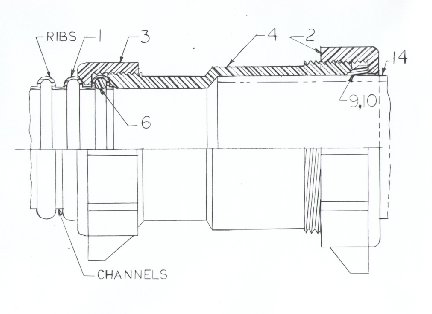
Fig. 3-4 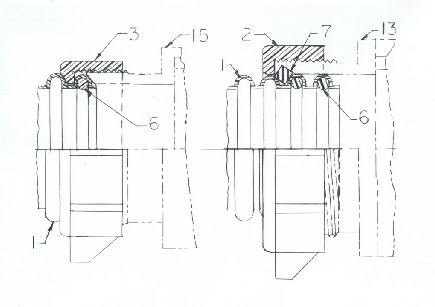
Fig. 5 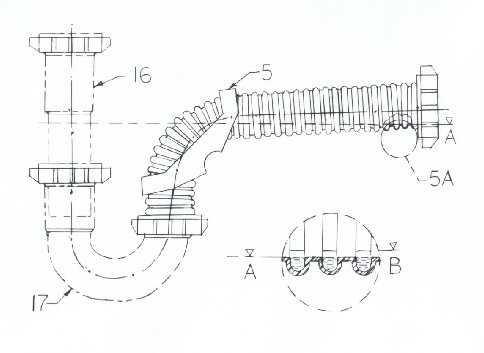
Fig .6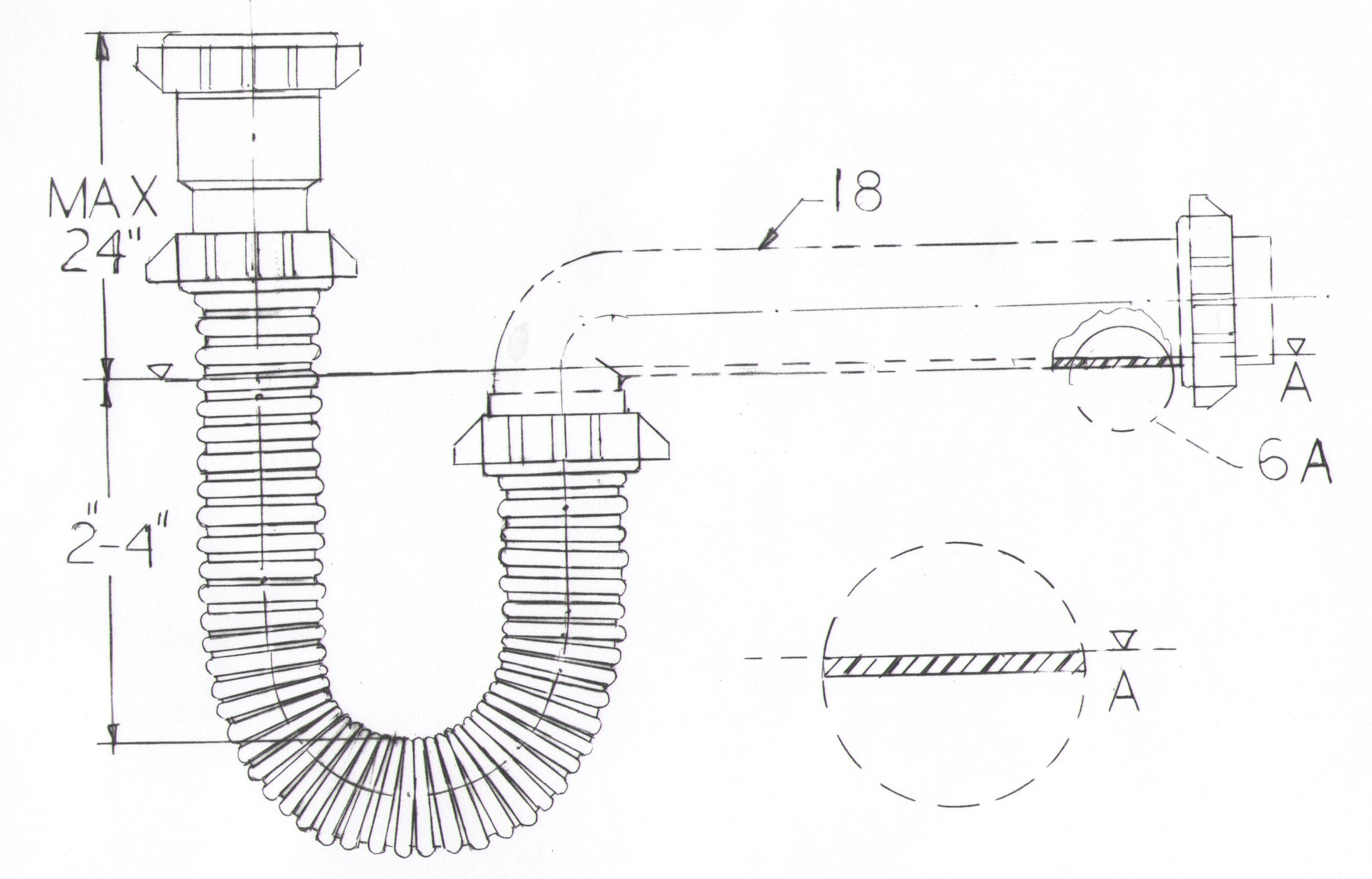
Fig. 7 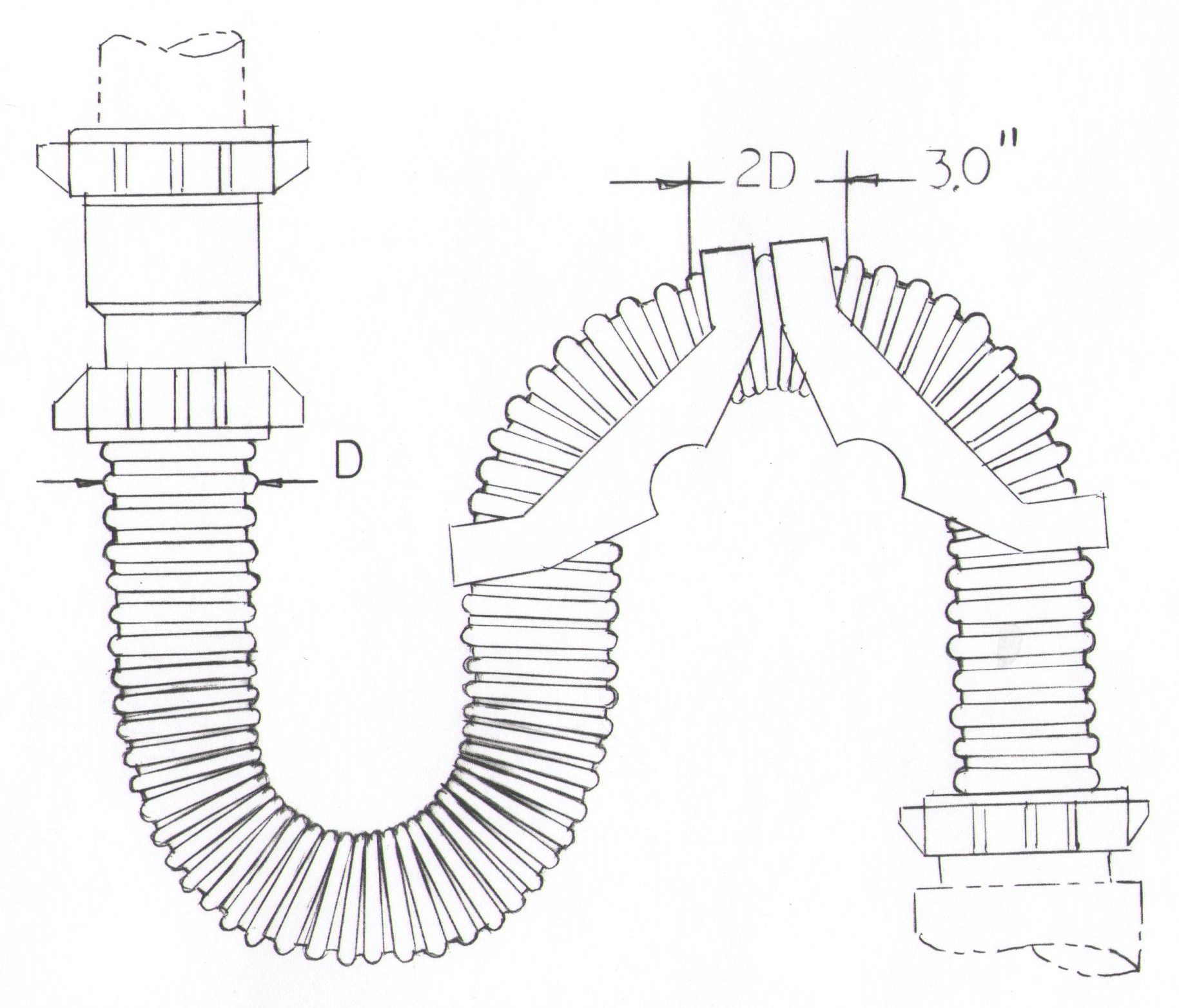
Fig. 8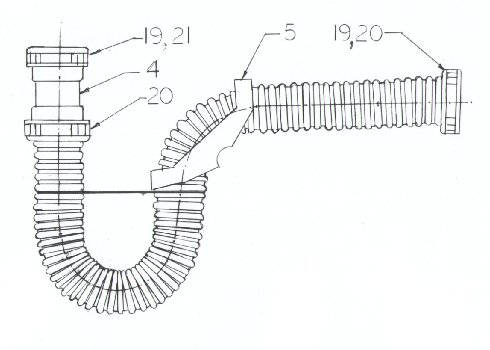
Fig. 9 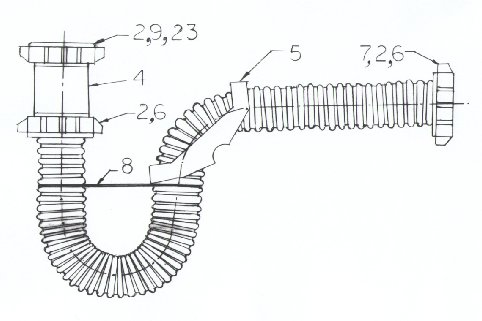
Fig. 10 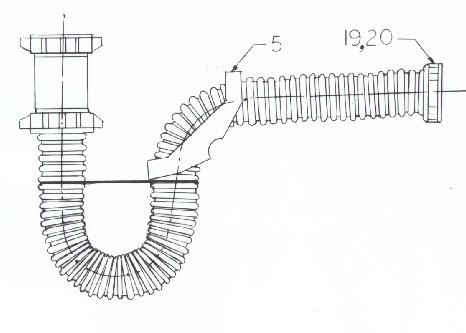
Fig. 11-12 